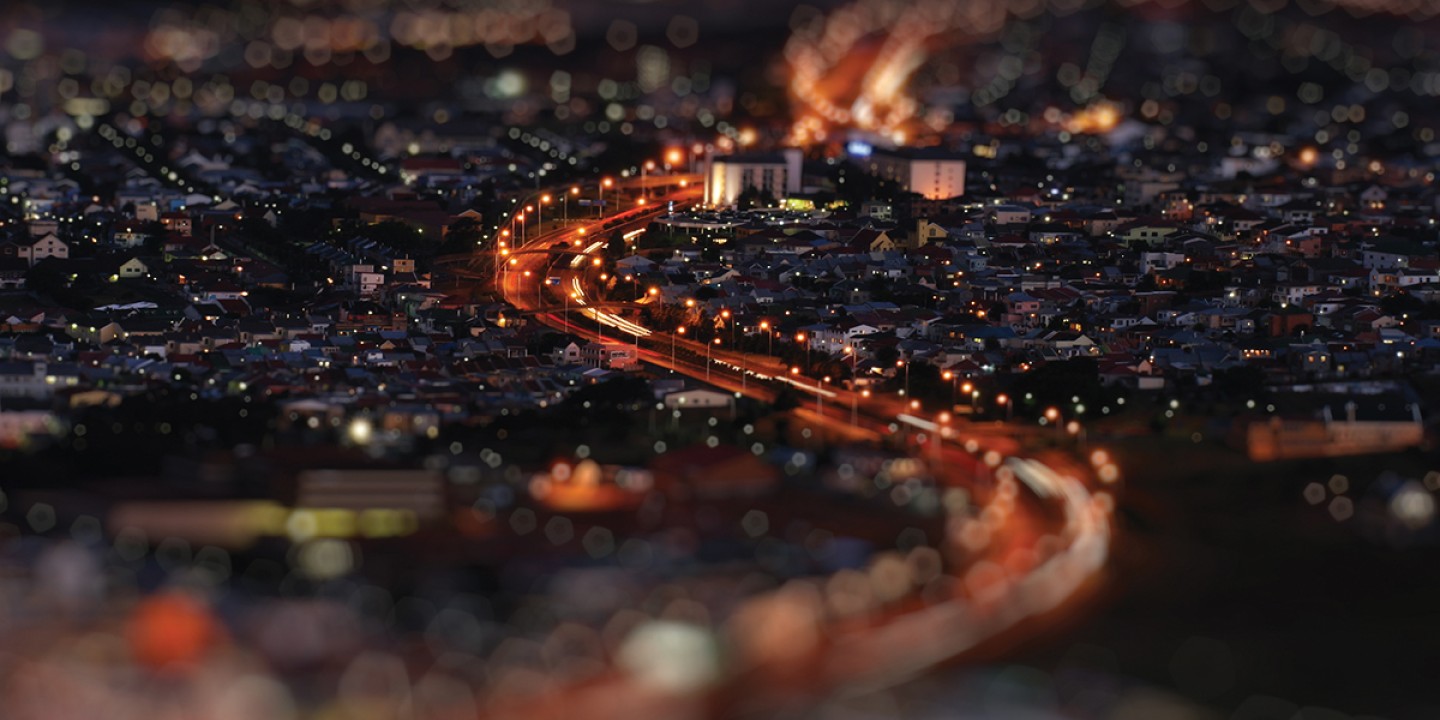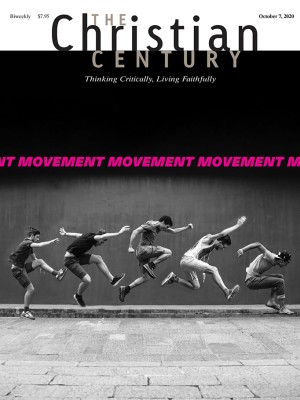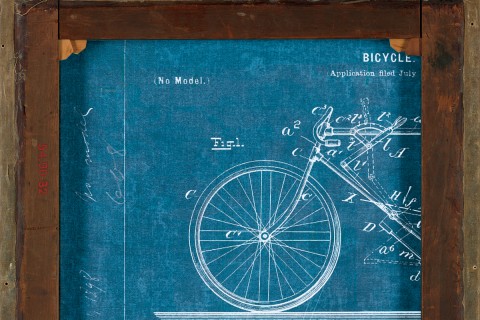The way we build our cities is racist
American buildings, streets, and neighborhoods don’t just host oppression—they embody it.

I live in a scrappy but cheerful neighborhood in Somerville, Massachusetts, where chain-link fences coexist with unruly beds of wildflowers. A few minutes’ walk takes me into the lush Agassiz neighborhood of Cambridge, northeast of Harvard University. Named for a 19th-century Harvard professor who espoused racist anti-Darwinist ideas, the neighborhood is in the process of being renamed for Maria Baldwin, a pioneering black educator. Right across the city border, stately, historic mansions line redbrick sidewalks. Fragrant honeysuckle and bright-red roses spill from freshly mulched gardens. On one tall wood fence, which surrounds a big house and obscures its presumably verdant lawns and genteel verandas, a large white cloth has been draped this summer, with a spray-painted message: Black Lives Matter.
It’s a devastating juxtaposition. If we peel back the layers of our buildings, streets, and neighborhoods, we begin to understand that they are not merely a neutral stage on which the horror and resistance of American race relations play out. They embody oppression.
Read our latest issue or browse back issues.
This should come as no surprise—architecture and city planning have been instruments of power for millennia. Yet when you think of systemic racism, these disciplines are likely not the first that come to mind. That negligence exacerbates their “subtle peril,” to borrow a phrase from Howard Thurman.
Oppression in urban planning and design has not always been subtle. In the past century, racist city building has fallen roughly within two spheres (in addition to the fact that all American cities exist on land stolen from indigenous peoples). First, for decades government leaders and real-estate professionals employed official policies confining people of color to certain districts and denying them access to financial services. It’s a deeply entrenched legacy, one that’s still perpetuated today, though less formally.
Second, since 1945, government policy around city planning has overwhelmingly prioritized private automobile transportation and the spread-out building patterns that accompany it. This unsustainable fixation comes at the expense of the same disadvantaged people, who are less likely to be able to afford a private vehicle or purchase a home in a gated subdivision and whose communities white power brokers destroyed to erect freeways.
To dismantle systemic racism as a nation and as the loving, generous church we aspire to be, we—and I am speaking primarily to my White siblings—have to recognize how the very ground we live on and spaces we occupy are working against us, and we have to actively change them.
We should start by taking a close look at our own neighborhoods. The gracious, affluent progressivism of Agassiz/Baldwin can seem a world away from the neighborhoods where so many Black Americans have been brutally killed by police. But if we look deeper, these divergent stories are inextricable and can be traced directly to racist housing policy.
In the 1930s, a federal agency called the Home Owners’ Loan Corporation—established as part of President Franklin D. Roosevelt’s New Deal—surveyed more than 100 American cities in order to produce “residential security” maps, which color-coded the perceived desirability (to White people) of each neighborhood. A neighborhood’s rating was invariably tied to the proportion of Black people living there.
Agassiz/Baldwin, as White and high-income then as it is today, was colored blue and characterized as “still desirable.” Less than a mile south, the Riverside neighborhood, with its 70 percent “infiltration of negro,” was colored red and labeled “hazardous.” Riverside is still predominantly Black—though gentrification, that latter-day stepchild of segregation, has increasingly displaced Black residents.
This redlining practice made it nigh impossible for people of color—or certain unwelcome European immigrants, such as Jews—to obtain fair mortgages or other kinds of financial assistance. It decimated many thriving neighborhoods and compounded disinvestment in those that were already poor.
While the Fair Housing Act of 1968 prohibited redlining, the economic damage was done. It has not been redressed. As Ta-Nehisi Coates wrote in his Atlantic article “The Case for Reparations,” “the concentration of poverty has been paired with a concentration of melanin. The resulting conflagration has been devastating.” Discrimination in lending continues as well: a recent study found that banks remain less likely to grant mortgages to people of color than to White people.
Exacerbating this legacy, since World War II our zoning laws have allowed only single-family homes in most neighborhoods, a policy designed to create exclusive White enclaves. It has resulted in a chronic lack of affordable housing, especially for people of color. (Only recently, as more White people have been affected, has a “housing crisis” been more widely declared.) Some cities have moved to overturn these zoning laws and diversify neighborhoods by increasing housing supply—one of the primary ways to give more people an opportunity to build wealth. When they do this, the most vocal opponents are usually affluent, White, liberal homeowners.
The Christian world has a generally poor record on integrated communities. But this was not the case in premodern Islamic cities, where the Qur’anic tenet of social solidarity was manifested physically in mixed-income neighborhoods, with rich and poor families living in close quarters, meeting each other daily in the intimate streets. Today, the subtle peril of opposing more affordable housing in our neighborhoods reinforces racial oppression. Unless we’re actively cultivating mixed-race and mixed-income neighborhoods—which have higher levels of civic cohesion, too—a Black Lives Matter sign on a big fence is mere lip service.
Exclusive single-family zoning goes hand-in-hand with the other major aspect of racially unjust American city planning: the emphasis on car transportation. If you are among the majority of Americans, you probably use your private car to get most places: the grocery store, work (though perhaps not during the pandemic, if you’re lucky), your kids’ school, church. You may go out to walk or ride a bike for recreation or exercise but not to go anywhere useful or particularly exciting.
This car-dependent reality is no accident. Americans have created it by design, too—and it’s deeply inequitable.
Since the early 20th century and especially since World War II, we’ve ceded more and more of our cities to the private automobile. We’ve abandoned the older model of compact, mixed-use neighborhoods, connected by transit, where daily needs are within walking distance of home. Instead we’ve been separating everything out—houses, offices, stores, and recreational facilities all in separate districts—and mandating vast parking lots and wide roads between buildings. Nothing is within walking distance, and even if it is, the walk is uncomfortable, noisy, and bland.
In this paradigm, the design of our cities, by and large, does little to affirm our human dignity as embodied creatures. It instead requires a polluting, destructive prosthesis on four wheels just to function in society.
That prosthesis is expensive to purchase, feed, and maintain. Americans of color and low-income Americans are far less likely to have access to a private vehicle and more often have no choice but to walk and ride public transit, even when that means getting up at 3 a.m. to catch the bus four miles away. (This is a key factor in COVID-19’s bias toward people of color.) At the same time, streets in neighborhoods of color are usually more dangerous and uninviting—with more and wider lanes, fewer crosswalks, fewer trees, and poorly maintained or nonexistent sidewalks—due to a legacy of underinvestment.
This means people of color not only spend more time commuting than white people but also make up a disproportionate share of the more than 6,500 pedestrians killed each year by drivers. Black people are more than twice as likely as White people to be killed by drivers on our streets, roads, and highways; for indigenous Americans, the risk is five times as high. Drivers are less likely to stop for or yield to Black pedestrians.
People of color have also been unfairly hurt by car infrastructure itself. Urban planners razed Black, Latino, and ethnic-minority communities in nearly every city, displacing their inhabitants to public housing ghettos whose design often made them unsafe, in order to build freeways through urban cores. The practice continues to this day, with Houston, for example, set to expand Interstate 45 by tearing down homes and businesses in historic Black neighborhoods.
In the face of this multifaceted, racially biased tragedy, we continue to spend billions of tax dollars per year on new or expanded roads and highways—which are more expensive and less efficient than pedestrian, bicycle, and transit infrastructure—all in the name of reducing traffic congestion. And it doesn’t even work: the more roads we build, the more spread out our cities become and the more we entrench car dependence. It’s a vicious, destructive cycle.
At the federal, state, and local levels, we are subsidizing and encouraging a way of building cities that actively oppresses certain marginalized communities—and in addition drains our economies, destroys our planet, and contributes to the health problems that come with air pollution and less walking. All these things harm people of color the most. And even when we try to do the right thing and undo this way of building, too often we exclude people of color from the process.
All of this subtle peril, these largely unnoticed sources of harm, betray a deeper problem, inextricable from Whiteness: the Enlightenment materialist view of the world that emphasizes utility over sacrality. We need to see the very fabric of the city as sacred space. God is not confined to particular places or buildings but is everywhere, bursting forth. Our streets are holy ground where people of color should be able to live and move without fear of harassment or assault, whether by police, driver, banker, or freeway.
We are each bound up in systems—physical systems as well as social, political, and legal—that are built on racism. And as Ibram X. Kendi says, when it comes to systemic racism, there is no neutral position to be had—because the status quo itself is racism. We are confronted with the work of dismantling it, and in doing so, centering the voices and ideas of people of color. It’s hard work, but we—particularly those of us who are White—must not see it as a burden. It is an invitation to become whole: as individuals, as the body of Christ, and as a world. If our neighborhoods and cities are not whole, we never will be.
A version of this article appears in the print edition under the title “Oppression by design.”






